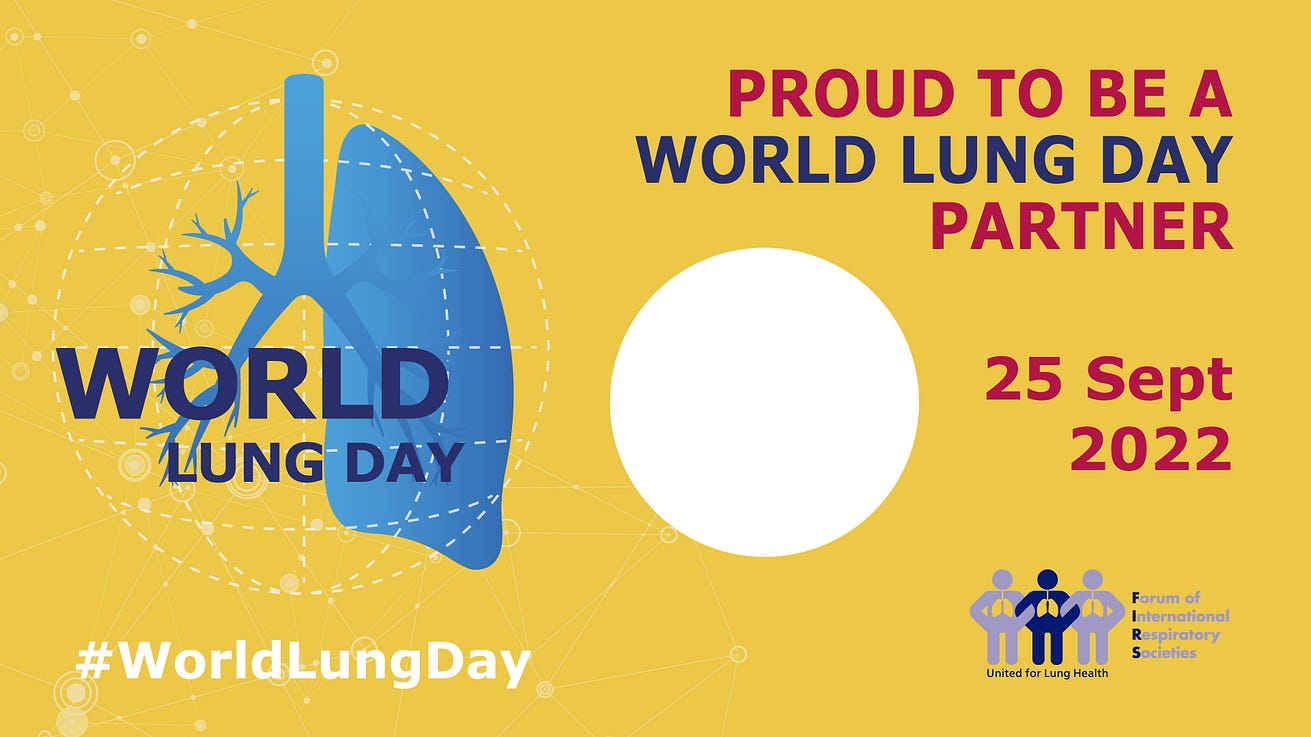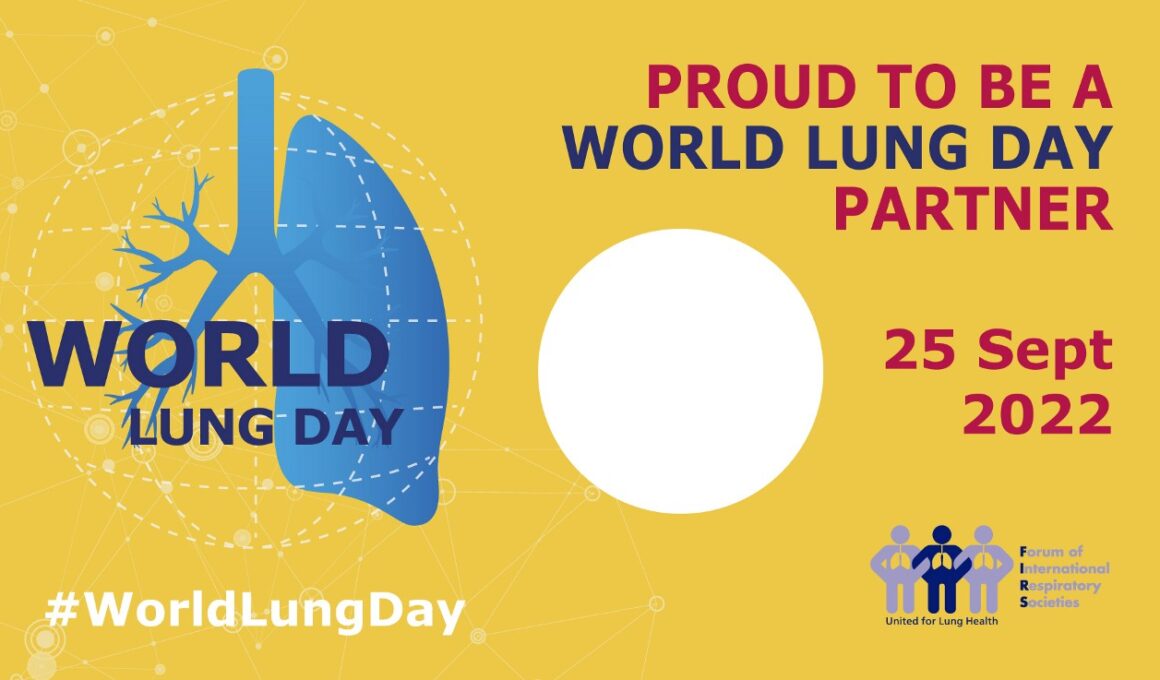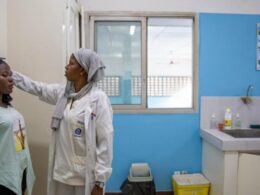Site editor:
Joaquim Cardoso MSc.
The Health Strategist — research, strategy and implementation
September 26, 2022
Wiley — Respirology
David Chi-Leung Lam MD, PhD
30 August 2022
Summary
- 1.The World Lung Day 2022 calls for increased global awareness for and action towards better respiratory health.
- 2.The top respiratory diseases are: (1) asthma, (2) chronic obstructive pulmonary disease, (3) pneumonia, (4) tuberculosis and (5) lung cancer, …
- … with particular heavy burden in low-to-middle income countries, …
- and their impacts are interacting and amplified with air pollution, smoking and climate change.
- Through the World Lung Day 2022, more individual and collaborative professional education, policy and research activities are advocated across different countries and societies.
Burden of disease — respiratory diseases:
- Asthma affects 1%–18% of population, including both children and adults, in different countries.
- The global prevalence of COPD among people aged 30–79 years is estimated to be 10·3%.
- Pneumonia accounts for 14% of all deaths of children under 5 years old, and elderly people with medical co-morbidities being the other at-risk group.
- More than 10 million cases of TB are reported and 1.5 million people die from TB each year.
- Lung cancer is the most common cancer in men with an age-standardized rate of 31.5/100,000 population and lung cancer is more common in men than women.

The World Health Organization (WHO) and the Forum of International Respiratory Societies (FIRS) designated 25 September 2022 as the World Lung Day 2022 to raise global awareness and action towards better lung health.
The goals of World Lung Day 2022 are to reduce the burden of respiratory diseases, with an emphasis on equal access to respiratory care and treatment without regard to socioeconomic status of respective countries, and early detection of treatable respiratory condition.
Let us be reminded of the imminent burden of the Big Five respiratory diseases, namely asthma, chronic obstructive pulmonary disease (COPD), pneumonia, tuberculosis (TB) and lung cancer, and the influence of air pollution, smoking and global warming aggravating the socioeconomic burden from these ‘Big Five’.
Let us be reminded of the imminent burden of the Big Five respiratory diseases, namely asthma, chronic obstructive pulmonary disease (COPD), pneumonia, tuberculosis (TB) and lung cancer, and the influence of air pollution, smoking and global warming aggravating the socioeconomic burden from these ‘Big Five’.

Asthma affects 1%–18% of population, including both children and adults, in different countries.
In children, the diagnosis of asthma and suboptimal control have significant impact on the physical and psychological growth and development of children.
In adults, suboptimal control of asthma may even be fatal, or may result in absence from work or psychosocial morbidity.
Asthma commonly associates with atopic phenomenon like eczema and rhinitis.
Exposure to air pollution and smoking may make asthma symptoms worse.
Occupational and environmental situation may give persistent allergen or irritant exposure making asthma control difficult.
Access to inhaled controller or reliever therapy, as well as newer biologics, could be an issue in low-to-middle income (LMIC) countries.
Asthma education is of utmost important to improve self-control of asthma.
Asthma education is of utmost important to improve self-control of asthma.

The global prevalence of COPD among people aged 30–79 years is estimated to be 10·3%.
The health burden of COPD came from acute exacerbation, leading to increased use of medications and hospitalizations, which are usually recurrent events.
Patients with COPD usually present with co-morbidities like ischemic heart disease, atrial fibrillation, lung cancer, depression and anxiety.
Smoking cessation is the first and foremost mission for chronic smokers, not to mention COPD subjects are to stop smoking immediately and completely. Access to relevant inhalers is limited in many LMIC countries.
Pulmonary rehabilitation program (PRP) is essential for COPD patients to enhance their self-care ability and to help them to stay as active as possible,3 but the access to PRP is often limited in LMIC countries.
Pulmonary rehabilitation program (PRP) is essential for COPD patients to enhance their self-care ability and to help them to stay as active as possible,3 but the access to PRP is often limited in LMIC countries.

Pneumonia accounts for 14% of all deaths of children under 5 years old, and elderly people with medical co-morbidities being the other at-risk group.
Pneumonia affects children and families all over the world, but deaths from pneumonia are highest in LMIC countries, where people may have weakened immunity from malnutrition.
Pre-existing illnesses, such as acquired immunodeficiency syndrome (AIDS), increase the risk of contracting pneumonia.
Immunization is the most effective way to prevent pneumonia.
Immunization is the most effective way to prevent pneumonia.

More than 10 million cases of TB are reported and 1.5 million people die from TB each year.
Pulmonary TB is associated with poverty and common in LMIC countries.
Pulmonary TB is a leading cause of death in people with AIDS and also a major contributor to antimicrobial resistance.
Treatment for drug-resistant TB is longer and more costly and treatment adherence can be difficult.
Treatment for drug-resistant TB is longer and more costly and treatment adherence can be difficult.

Lung cancer is the most common cancer in men with an age-standardized rate of 31.5/100,000 population and lung cancer is more common in men than women.
Lung cancer burden can be reduced with early detection or screening for lung cancer with low-dose CT thorax, especially in high risk smokers.
Even when screening programs are established, early diagnosis programs or lung nodule programs are still necessary to identify those lung cancer cases occurring in people who do not meet the age or risk factor criteria for screening.
There is a significant variation in cancer treatment availability between countries of different income levels; comprehensive treatment is reportedly available in more than 90% of high-income countries but less than 15% of LMIC countries.6
There is a significant variation in cancer treatment availability between countries of different income levels; comprehensive treatment is reportedly available in more than 90% of high-income countries but less than 15% of LMIC countries.6

WHO designated air pollution is most significant environmental risk to respiratory health.
Over-abundance of air pollutants such as particulate matters, greenhouse gases like methane and ozone, and aerosols, will shield off increased amount of incoming sunlight, which is needed for the healthy growth of green plants and hence a food source, as well as being carbon dioxide absorber.
Failing to remove increasing amount of carbon dioxide in atmosphere will mean a reduction of heat dissipation through atmosphere, ultimately resulting in global warming.
Failing to remove increasing amount of carbon dioxide in atmosphere will mean a reduction of heat dissipation through atmosphere, ultimately resulting in global warming.
At times of the COVID-19 pandemics, the reduction in outdoor activities resulted in relatively lower emissions causing air pollutants.
Hospital admission for acute exacerbation of COPD and asthma reduced markedly with the COVID-19 pandemics.
Clinical management of lung cancer and TB was apparent not significantly affected, except for delay in diagnosis and management in the COVID-19 pandemics.
The real challenge will come with the passing of COVID-19 pandemics and the pace of recovery from the COVID-19 pandemics, when human activities and hence air pollution will return to close to those levels before the pandemics.
The real challenge will come with the passing of COVID-19 pandemics and the pace of recovery from the COVID-19 pandemics, when human activities and hence air pollution will return to close to those levels before the pandemics.
Our respiratory health is constantly challenge from exposure to a variety of noxious agents or pollutants present in ambient air.
It has been estimated that at least two billion people are exposed globally to the toxic smoke produced by combustion of biomass fuel, inefficiently burned in poorly ventilated indoor stoves or fireplaces used for cooking or warming.7
More than a billion people inhale polluted outdoor air, and another billion are exposed to tobacco smoke either in active or in passive smoking.7
It has been estimated that at least two billion people are exposed globally to the toxic smoke produced by combustion of biomass fuel, inefficiently burned in poorly ventilated indoor stoves or fireplaces used for cooking or warming.7
More than a billion people inhale polluted outdoor air, and another billion are exposed to tobacco smoke either in active or in passive smoking.7
As a consequence, respiratory disease is a major cause of morbidity, disability and death affecting individuals of different socioeconomic status.7
As a consequence, respiratory disease is a major cause of morbidity, disability and death affecting individuals of different socioeconomic status.7
A collaboration between different countries would enhance effort in respiratory health care intervention.
Through the World Lung Day 2022, we called for further personal and society awareness of the respiratory health and diseases, with increased collaboration between societies and further research in respiratory health and diseases.
The Asian Pacific Society of Respirology (APSR), in collaboration with other societies and colleagues in FIRS and WHO, is in full support of the World Lung Day 2022.
Through the World Lung Day 2022, we called for further personal and society awareness of the respiratory health and diseases, with increased collaboration between societies and further research in respiratory health and diseases.
Originally published at: https://onlinelibrary.wiley.com
References:
See the original publication












